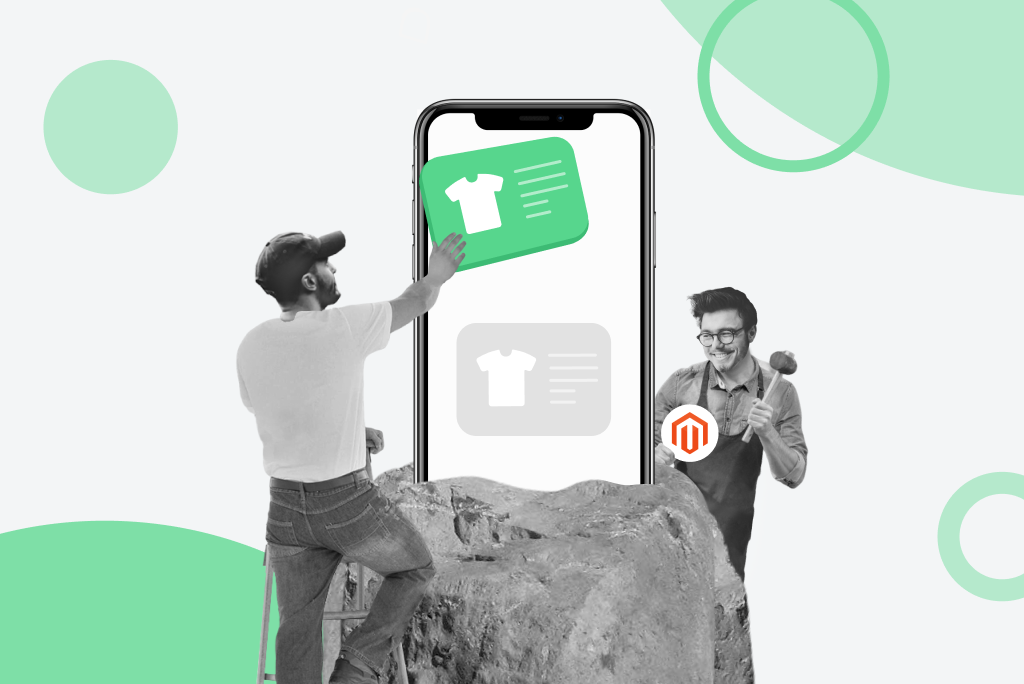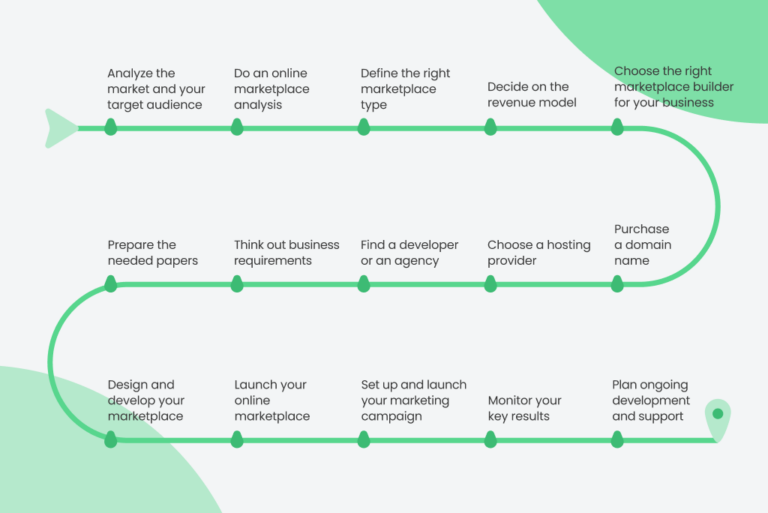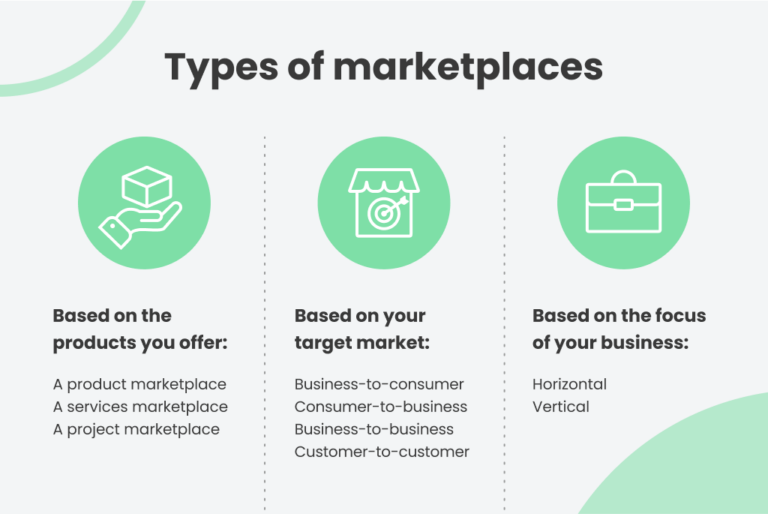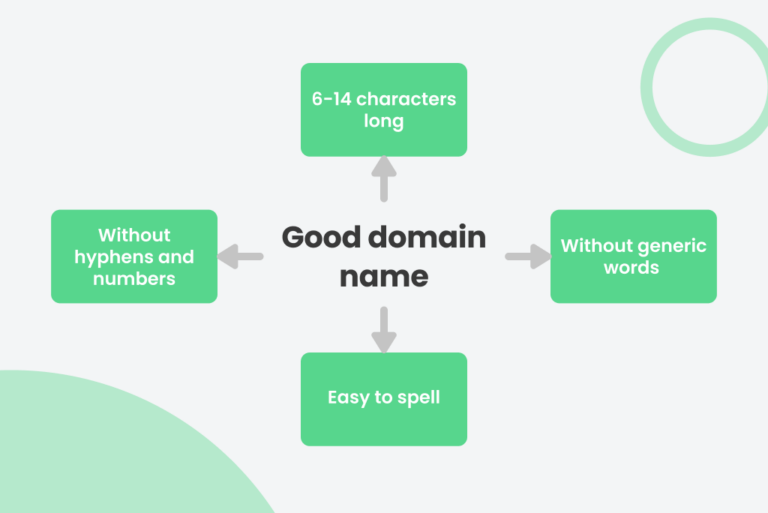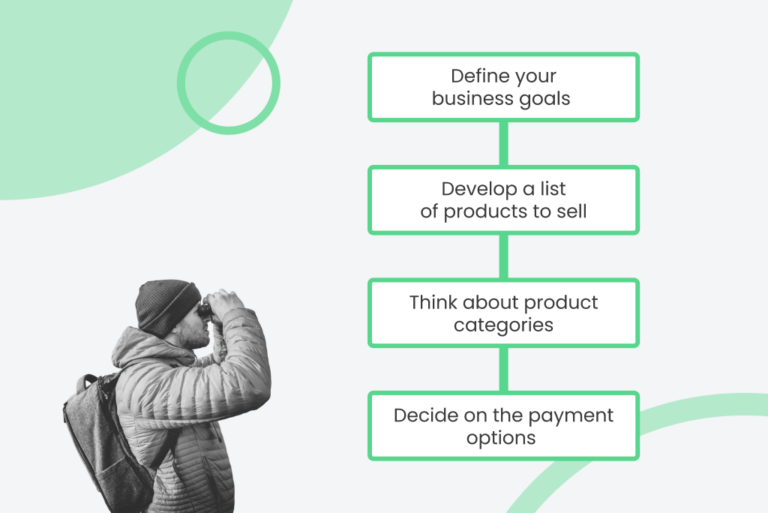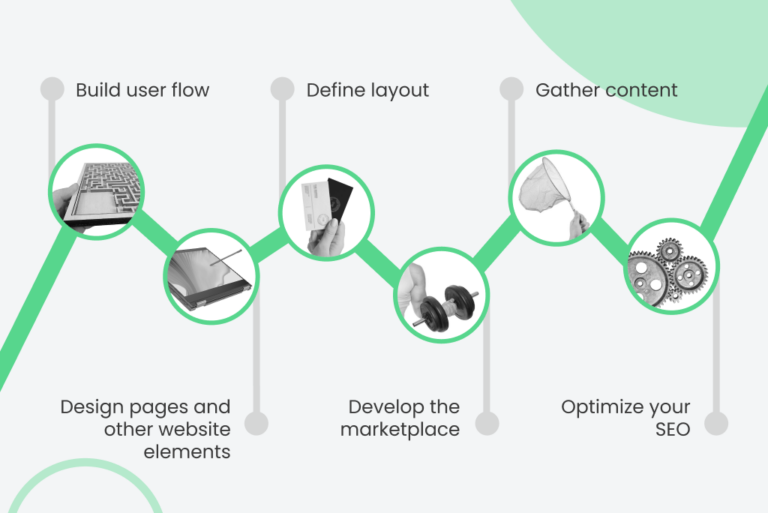Have you ever dreamed of creating a giant business like eBay or Amazon? Well, now is a great time to start making your dreams come true. eCommerce has always been a successful industry, but after COVID-19, it skyrocketed. According to the Adobe data, during the last two years of the pandemic, consumers spent $1.7 trillion on online shopping; that’s 55% more than in the two years before COVID-19.
Some more practical benefits of starting your own marketplace are:
- You can start with a relatively small budget.
- An online marketplace will bring more opportunities for international sales.
- You can collect customer data for future marketing.
- A marketplace model is more loved by the customers than plain online stores (an inventory model) since people can compare prices and products on one platform.
- You won’t have many financial risks, since you are not the one investing in the products or their shipping.
- You won’t have to invest time into product management since that will be the vendors’ job.
As you can see, online marketplace development and the marketplace model itself are totally worth it nowadays. The demand for online marketplaces is growing, and if you are just getting started with your entrepreneur journey, your timing couldn’t be better! Launching a marketplace online is a time-consuming job, but it pays itself off in the end.
Use this article as a go-to instruction to make building an online marketplace a bit more structured. Let’s explore:
- What is a marketplace?
- What type of online marketplace is suitable for your future business
- Steps on how to start a marketplace website
- How to choose the right marketplace building platform
- How much does it cost to create a marketplace?
- A couple of best online marketplace builders
If you are looking for the best marketplace building tool, check out the comparison of the three most famous eCommerce website builders.
What Is a Marketplace?
An online marketplace, or an online software marketplace, is an eCommerce multi-vendor website (or an app) that facilitates online shopping by connecting merchants with buyers. Online marketplaces have been around since 1995: the industry started with oldies like eBay and Craigslist. Nowadays, there are millions of future merchants who are wondering how to build marketplace websites and millions of e-marketplaces all around the world. The leaders of the market are
- Amazon – it went from being an online bookstore in 1995 to selling more than 12 million products on its website in 2022. Right now, it’s a clear world leader.
- eBay – with its unique business plan allowing people to auction their items, eBay got 182 million vendors in 190 countries.
- Rakuten – a Japan-based marketplace that is famous for giving its users cashback for shopping. This website gets around 542 million visits per month, which makes it the third most attended marketplace in the world.
- Etsy – designed to sell handmade items, Etsy attracts crafters, artists, collectors, antique and vintage item sellers and grows really fast. Etsy’s annual revenue is almost $2,5 billion.
- AliExpress – this marketplace, like Taobao, Tmall and Alibaba.com, is owned by the Chinese Alibaba Group. AliExpress sells millions of items to more than 150 million people worldwide.
How To Start an Online Marketplace: Learn the Business Side
Before developing a marketplace website itself, you should gather enough information to ensure the process goes smoothly.
Lots of entrepreneurs come into eCommerce with a bunch of great ideas. However, not all of the ideas end up working out and especially bringing income, even though the potential customers like them. Unfortunately, it’s not enough. Why is that?
For instance, you are planning on launching a marketplace that can help people resell their old electronics. At first glance, it sounds great! Finally, sellers can have a marketplace platform designed specifically for gadgets; and buyers get a trusted website with a wide variety of products they’ve been looking for!
However, buying a piece of electronics is a responsible job for a lot of people: it’s a pretty pricey purchase, which lasts for a couple of years. So, if the audience in your region isn’t used to buying used products, or recycles old electronics instead of reselling them, your idea will go down like a Titanic.
Remember, ideas do not exist in a vacuum, their success depends on numerous factors in your environment. So, it’s very important to validate them before starting an online marketplace development process. Validating your business idea can enable you to predict if people will not just like but benefit from your idea.
How can you do it?
Step 1: Analyze the market and your target audience
Before launching your marketplace online, find out how big your target market is and what share you can potentially capture.
Suppose you are planning to host peony sellers. Look into the stats of the market: what percentage of the market is owned by peony sellers? How many units are sold per year? What is the number of retailers that sell peonies? Determine your business’s place in this market, and define the characteristics of people who can be your potential vendors and clients.
Your demographics will affect the look of your marketplace website enormously. Are they desktop fans at all, or should you also make a marketplace app? If the latter, what will the marketplace app development cost be depending on its features?
Feel free to conduct a couple of interviews with your potential customers and vendors. What are their needs and preferences when it comes to online shopping? Make sure their wishes are reflected in your future marketplace website.
Step 2: Do an online marketplace analysis
During your market research, you will come across the most noticeable industry players, aka your competitors. To paraphrase Eleanor Roosevelt, try to learn from the mistakes of others since you won’t live a life that long to make so many yourself.
How can you benefit from an online marketplace analysis?
- Find new traffic sources
- Learn the keywords to rank for
- Find link-building opportunities
- Look for branding examples
- Learn how their search engine works
- Understand how their advertising works
- Read the website content and memorize a few ideas
- Learn how (or if) they build customer loyalty
- Find out what marketplace software is most frequently used to create a marketplace like yours
Looking into your competitor’s marketplace websites can give you lots of ideas of your own and be a tremendous learning opportunity. Use this knowledge to define how your online marketplace is going to function. That said…
Step 3: Define the right marketplace type
There are three types of marketplaces based on the products you are planning to offer:
- An online product marketplace where merchants sell all types of physical products, like cosmetics, clothes, toys, electronics, etc.
- An online services marketplace which offers services of any kind, for instance, carsharing, cleaning, finding a tenant; it can also help customers find people who can perform those services.
- An online project marketplace which allows entrepreneurs to raise money for their future businesses. Such online marketplaces are often called crowdfunding platforms.
Another classification of the marketplaces is based on the focus of your business. Horizontal marketplaces will be a great fit for merchants who are willing to create an online marketplace with a wide variety of diverse products; vertical marketplaces will suit businessmen who focus on selling specific things to limited audiences.
By the way, before starting an online marketplace, think about what audiences your website will cater to. There are four types of marketplaces, based on your target market:
- Business-to-consumer is the most famous model in eCommerce, where businesses sell to regular end-users.
- Consumer-to-business is a great marketplace for designers, writers, and other freelancers who want to sell their services to businesses.
- Business-to-business is a marketplace that helps companies sell their products or services to other companies.
- Customer-to-customer is a marketplace that has both buyers and sellers as regular users.
Step 4: Decide on the revenue model
Your business model has an enormous impact on how your marketplace website will look. Will your marketplace platform have any additional sections for listings? Or side-bars for third-party advertisement? Will it be equipped with pages for your VIP clients? To decide this, first, think of your revenue model.
There are 5 most popular revenue models for an online software marketplace:
- Commission-based is the most popular revenue model among marketplace website owners. They usually charge sellers, buyers, or both for their services.
- Freemium offers its basic functionality for free, however, all of the high-profile functions are available only for an additional price.
- Membership-based, or in other words, a subscription-based model requires weekly, monthly, or annual fees to use their marketplace website.
- Advertisement-based model allows third-party companies to promote their products or services on their marketplace website for a fee.
- Listing fees model is close to the commission-based one. But it charges commission only from sellers who want to list their products in some special, most visible sections of your marketplace platform.
Rest assured, the time you spend on defining your main business requirements before marketplace website development will pay off in the future.
After you’re finished with all the steps, and you are confident in your idea, audience, and business model, it’s time to create a marketplace website.
If you are new to this, choose an experienced development agency! It can assist not only with the marketplace development but also consult you on the preparation process!
Step 5: Choose the right marketplace builder for your business
That’s one of the most important steps when it comes to putting your marketplace online. The marketplace software builder you choose is the foundation of your website, which determines not just how things will look, but how exactly they will function. We will talk about the best online marketplace building platforms in the next section of this article. Right now, take a look at a few important criteria you should take into account before starting to create a marketplace of yours. Ask yourself these questions:
- Do you feel comfortable using the editor of this marketplace platform?
- Does it support the types of products you want to sell?
- Is customer navigation well-thought?
- Is the maintenance and upgrading costs of this marketplace platform affordable?
- Will you be able to add new features to your virtual marketplace in the future?
- Does this online marketplace building platform come with SEO-friendly features?
- Is it mobile-friendly? (If the marketplace app development cost turns out to be too high at this stage)
- Will it make your online software marketplace secure?
- Is customer support good and fast for no extra cost?
There may be many criteria of your choice to add to this list. Don’t rush into this decision; define what’s important to you and look for the online marketplace platform builder that meets your needs. Talk to the people who work there, set up meetings and ask questions. A lot of platforms offer free trials. If something like this is available, give it a shot. Now, what are some of the top marketplace builders?
WooCommerce
WooCommerce is an eCommerce plugin for WordPress. You should download this plugin to start selling on your WordPress marketplace website. WooCommerce is free and open-source, which means you should have some technical knowledge to use it. However, the company promises that the plugin is not that hard to use and is suitable for small business owners.
WooCommerce became one of the most popular open-source solutions for a good reason, however, existing clients say there is room for improvement. WooCommerce is dependent on other plugins for things like checkout and extended reports. Some of them are paid, some may conflict with WooCommerce functionality since they are made by third-party developers.
Shopify
Shopify is arguably one of the most well-known eCommerce store builders there. To use this platform as a virtual marketplace, you will have to download an add-on app.
Shopify is simple to use, it offers lots of themes, features, and add-ons. It’s also a fully-hosted platform which means you won’t pay additional money for server hosting or maintenance. As for the drawbacks, Shopify’s existing clients complain that it is not as customizable as they want it to be.
Being a SaaS (software-as-a-service) solution, Shopify limits the custom changes you might want to make. So bear in mind that you will be dependent on Shopify to release new features and learn how to use them. In the future, it may create some difficulties in scaling your online marketplace and enriching its functionality.
Salesforce Commerce Cloud
Salesforce Commerce Cloud is one of the biggest eCommerce services suitable mostly for medium and large businesses. It will be a great solution for those who are planning to scale their online marketplace. It has a number of AI-based features such as product recommendations, automatic search, category tailoring, and insights into customer behavior.
Like Shopify, Salesforce Commerce Cloud is a SaaS solution, so it is supposed to free your team from managing a technical roadmap. However, it also means that Salesforce Commerce Cloud offers limited access to the source code and customizations.
Salesforce Commerce Cloud provides both B2B and B2C features. At the beginning Salesforce had only B2C functionality; and even now to use B2B features you will need to buy an additional suit and integrate it with your website.
Magento
Magento, or Adobe Commerce, is one of the best online marketplace builders that offers an open-source version (Magento Open Source edition) and a paid extended version (Adobe Commerce). On the market, it’s known for its great customizability.
Magento Open Source is a free marketplace website software that allows you to customize every aspect of your software marketplace. If you have ambitious business plans, Magento is a smart choice. It allows you to have the full freedom to create and customize new and existing features and to scale your marketplace together with business growth.
It’s possible to create an online marketplace with both Magento Open Source and Adobe Commerce. Still, Adobe Commerce offers some additional features. Adobe Commerce has great B2B features, AI-based search, improved marketing features, and Page builder, a universally loved drag-and-drop tool that helps to manage and edit the content on your virtual marketplace.
Magento Commerce (or officially Adobe Commerce) pricing starts at $22,000 per year.
Decided to go with Magento? Great choice! Learn how to create a multi vendor marketplace platform with this eCommerce platform
Step 6: Purchase a domain name
If you already have a domain name, you can transfer it to your website on a new marketplace platform. However, if you don’t, follow a few rules to make it recognizable and easy to memorize.
Avoid hyphens and numbers to make your domain sharable. If you want to name your online marketplace with a totally new made-up word, make sure it is easy to spell. At the same time, make sure, your domain name stands out, don’t use generic words you can find on every corner of the Internet. It will not just be memorable but have a better potential for search engine optimization (SEO). Remember, 6-14 characters is the optimal length for the domain if you want to make it easy to remember.
Step 7: Choose a hosting provider
Hosting is an online service that allows you to move your marketplace online. There are two types of hostings: on-premise and cloud.
On-premise hosting usually keeps its server hardware, firewalls, operating systems, and applications in-house; it means there has to be an actual physical space for all this equipment. If you choose this type of hosting, you will have to make sure that you have room for a server, handle its installation, and hire people to look after the hardware. It’s more old-school and is suitable for large businesses.
Cloud hosting, on the other hand, is best for small and middle-sized businesses. Your data will be stored in a network of multiple virtual servers. Cloud hosting is reliable, speedy, and affordable for most businesses. The company you choose will handle all the updates and upgrades and help keep your marketplace website secure.
Step 8: Find a developer or an agency
Even if you do have a technical background, consider finding a developer who specializes in a particular marketplace software builder. They will help you with all the preparations we talked about in the previous paragraph, and of course, create a marketplace website, or build a marketplace app, if needed. This help will be very specific to a marketplace platform of your choice.
A great idea is to hire certified experts. Certified Magento developers, for instance, have to pass an exam every two years, to keep their skills sharp. It also keeps them updated about the newest features of this website builder.
You can find a developer or an agency on websites like Clutch, Upwork, Toptal, Guru, or Remote.co. Another great idea (especially if you chose the Magento marketplace building platform) is to turn to the Adobe Solution Partner Directory and find there a professional or an agency you need.
Chose Magento to build a marketplace? Learn how to find a professional Magento developer to help you with this.
Step 9: Think out business requirements
To make the process of building a marketplace quick and effective, go to your developer or an agency with a bunch of ideas on how to translate your business requirements into project requirements.
Try to be as specific as you can. Tell your development team what business goals you want to reach with your website. Develop a list of products you will sell, prepare their images and descriptions if needed. Think about what product categories you would like to see on your website and what payment gateways you would like to offer. This would be a good time to set up your payment options and sort out your shipping settings.
If you don’t know yet how something should work in your future online software marketplace, no worries. If you decide to work with a Magento development agency, you won’t need to dive into tech details. The only secret is to hire a company with relevant experience.
If you use our previous advice on how to hire a qualified developer or choose a top agency, your development team is most likely well-organized, knowledgeable, and professional. Like you have business expertise, your development team has technical expertise. Trust them with the tech solutions, but be proactive and ask questions if needed.
Step 10: Prepare the needed papers
Consider applying for an employer identification number (EIN); find out if your business has to have one. Even if it doesn’t, this nine-digit number can be a great instrument to divide your personal and business finances.
Obtain all the licenses and permits needed to launch your marketplace website legally. Usually, online marketplaces don’t require that many papers. However, there are still some you must have. So, find out if you need:
- to register your business with your state and receive a general operating license
- professional and trade licenses
- sales tax permits
- health, safety, and environmental permits
- signage permits
- building and construction permits
Step 11: Design and develop your marketplace
If you don’t have any technical background, let your agency or a developer guide you through this process. On the stage of design, you will have to:
- Build user flow
- Define layout
- Gather content
- Design pages and other website elements
- Develop the marketplace
- Optimize your SEO
After you or your design team approves the concept and user interface part, you can start the marketplace development itself. You can build a website from scratch or use one of the eCommerce platforms that offer the required functionality.
Step 12: Launch your online marketplace
First you should start an online marketplace and after that promote it. Take time to validate your business idea, website, and app. Form an exclusive group of people who will explore your marketplace website, and give feedback. Make changes according to their comments and invite more people to see if your changes worked.
You don’t have to finish the whole project to show it to people, try an MVP approach instead. MVP, or a minimum viable product, has just enough features that can attract your first users. Sometimes an early MVP experiment can show that your assumptions about your audience were wrong, and your idea needs more time.
Only after your website is fully functional, start a major marketing campaign.
Step 13: Set up and launch your marketing campaign
The main goal of your marketing campaign is, of course, to attract new customers to your online marketplace and to make it visible among the competitors. You can do it using the following channels of communication:
- Media relations
If you want the name of your online marketplace to appear in the most relevant publications of your region or even your country, you better have an eye-catching story. Think why’d you start your business in the first place? What was your motivation? What crucial problems do you solve with your new website? Does it have any features that make it stand out? Think about that, find relevant reporters, and pitch them your story.
- Influencers
According to the 2022 survey, 89% of marketing professionals believe that influencer marketing works better than other marketing channels. No wonder: it’s the best equivalent we have to “word-of-mouth”, the oldest marketing channel there is. Like with media relations, the key here is to find the most relevant influencers on the social media platforms your audience uses most often. Bear in mind that 49% of consumers depend on influencer recommendations.
- Performance marketing
Performance marketing is worth investing into, since you will be paying only for measurable results. Trackable performance is the most obvious advantage of this marketing approach.
Step 14: Monitor your key results
When everything is done, define the metrics you will measure the results by. Consider using the following ones:
- monthly active users
- seller-to-customer ratio
- repeat purchase ratio
- customer acquisition costs
- customer lifetime value
- shopping cart abandonment rate
- returning customer rate
- click-through rate
- month-end inventory snapshot
Step 15: Plan ongoing development and support
Launch and leave approach doesn’t work. Your online marketplace will need continuous improvement to keep your clients and vendors satisfied and encourage conversions. Moreover, failing to update your website can lead to security issues, Google ranks drop, slow performance, and many other issues. On the other hand, if you do updates on time, you will avoid a costly rebuild in the future.
Talk to your development team and create a plan to check your marketplace and update it once every week or at least every month – the frequency should depend on your needs. Make sure you keep an eye on your marketplace performance, the latest Google search engine updates, or news from your eCommerce software. That’s how you know when you need changes.
Marketplace App Development Cost
The cost of building an online marketplace ranges from $1,000 to $500,000, or even beyond. The price highly depends on the details of your project: what set of features will it have? Will you opt for a ready-made website or custom development? How much can you do on your own? How complex will your marketplace be? A simple marketplace with basic features might require a $50,000 investment.
However, creating an online marketplace is often not enough when it comes to a successful eCommerce business. The truth is, customers are eager to make purchases not just on their desktops anymore. 79% of mobile phone owners have shopped online during the last 6 months using their mobile devices, so, you might want to create a marketplace app. Building a marketplace app means you can give your customers a comfortable and effective option to shop from devices that rarely leave their sight.
If you are worried about the marketplace app development cost, don’t let it stop you. There is a fast and financially reasonable solution that will help save money and create a marketplace app that will be successful on the market.
This solution is called PWA, or Progressive Web App. It’s a technology that combines the capabilities of traditional websites and those of native applications.
How exactly does it work?
PWA allows you to create a combination of a website and a native app. This app can be downloaded directly from your desktop marketplace and opened from any browser, no matter if it’s Chrome, Safari, Firefox, or others. But still, it is saved as an icon on a phone’s main screen. This solution is fast and offers a full-screen experience and app-like navigation which makes starting an online marketplace much easier.
PWA has transformed a few world-famous eCommerce businesses. For instance, thanks to this technology, Aliexpress has increased the company conversion rate by 104% and raised the time users spend per session by 74%. Sounds great, right?
So, how much will it cost?
PWA is cheaper and faster to develop than traditional apps, that’s great news. With PWA, there is no need to write separate codes for different platforms, that’s why it is not that time-consuming and requires less financial investments.
Final words
Launching your own marketplace online is a challenging but very rewarding endeavor. If you are ready for the journey, there is no better time to do it: online shopping is at its peak, and a lot of small businesses need help exposing their products during these tough post-pandemic times. So, a marketplace model is in high demand.
Remember, it’s important to be prepared, validate your idea, plan everything ahead, and if you have a possibility, hire a great team of professionals that will work beside you. That way, success is guaranteed and you will grow the best online marketplace in your niche.

